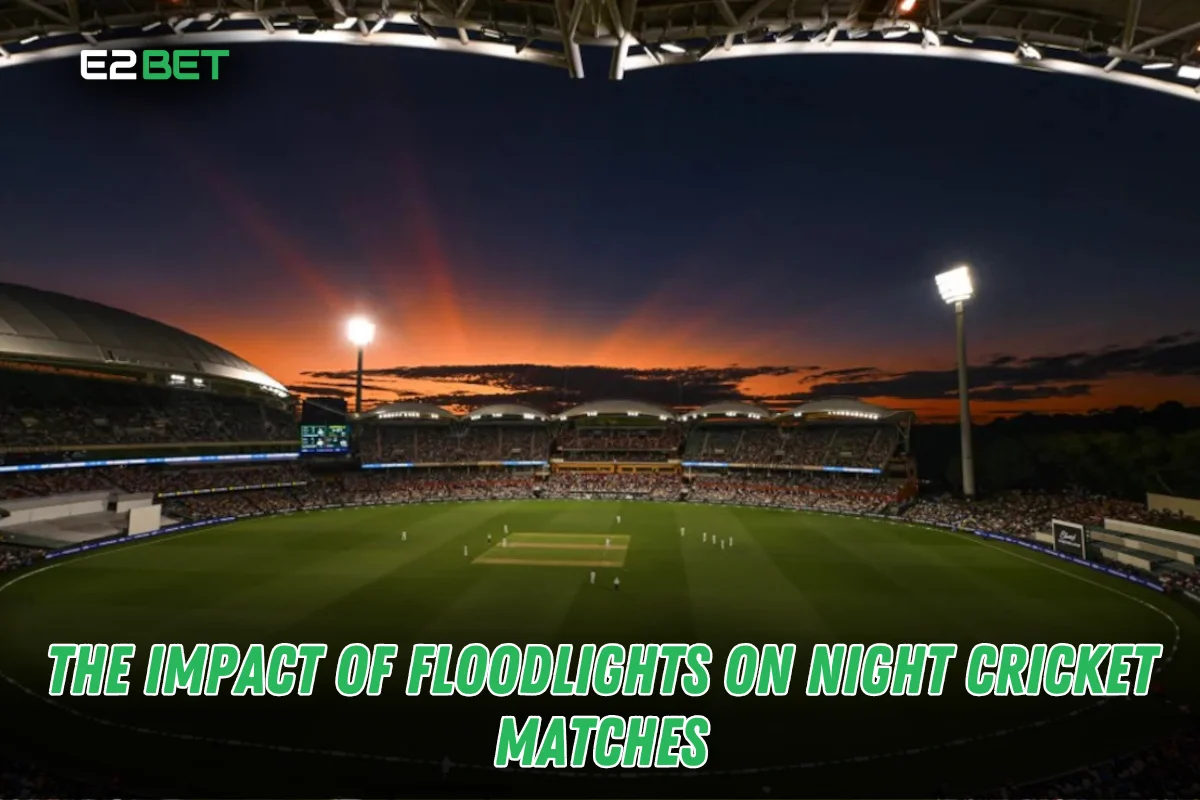Cricket has always been a game of tradition and passion, bringing millions of fans together across the globe. While the sport was historically played in daylight, the introduction of night matches transformed the cricketing experience. This revolution was made possible by cricket floodlights, which allow games to continue under artificial lighting. In this article, we will explore the impact of floodlights on night cricket matches, from enhancing viewership to improving player performance and addressing technical challenges.
The Evolution of Floodlights in Cricket
The First Use of Floodlights in Cricket
The first recorded use of floodlights in cricket dates back to the 1950s when experiments were conducted to make the game more accessible to working-class fans. However, it wasn’t until the 1970s and 80s that night cricket became a regular feature, particularly with the advent of One Day Internationals (ODIs). The first-ever day-night match under floodlights was a milestone, changing the sport forever.
Milestones in Night Cricket History
- 1977: The first official day-night ODI was played in Australia under stadium-grade LED floodlights.
- 1992: The Cricket World Cup featured floodlit matches for the first time, boosting global TV viewership.
- 2015: The first-ever day-night Test match was played using a pink ball, improving visibility for players and umpires.
Advantages of Floodlights in Cricket Matches
Enhancing Viewership and Entertainment
Floodlights have made cricket more accessible to global audiences. Night matches allow working professionals to enjoy the game after office hours, significantly boosting television viewership and stadium attendance. The prime-time scheduling also benefits broadcasters and sponsors, leading to increased revenue for cricket boards and franchises. Live streaming of day-night Test matches has further increased the sport’s digital presence.

Improving Player Performance and Safety
Proper lighting ensures that players can track the ball effectively, reducing the chances of misjudged catches and injuries. Umpires also benefit from better visibility, leading to more accurate decisions. Advanced LED floodlights minimize glare and shadows, improving the overall playing conditions for cricketers.
Commercial Benefits of Night Matches
Night cricket has opened the door for greater sponsorship opportunities. Advertisers are willing to pay premium rates for prime-time slots, generating higher revenue for cricket leagues such as the Indian Premier League (IPL) and Big Bash League (BBL). Cricket floodlight sponsorship deals have become an essential part of modern cricket.
Technical Aspects of Cricket Floodlights
How Floodlights Work
Modern stadiums use high-intensity LED floodlights, which provide uniform illumination across the field. These lights are strategically positioned to minimize shadows and glare. The comparison of night matches in different cricket leagues shows that proper floodlight technology plays a key role in maintaining match quality.
Setting Up Floodlights in a Cricket Stadium
- The placement of floodlights must ensure that no part of the ground is poorly lit.
- Regular maintenance is essential to prevent power failures during matches.
- Upgrading to energy-efficient floodlight systems helps reduce operational costs and environmental impact.
Challenges and Drawbacks of Floodlights in Cricket
Glare and Shadows Affecting Players
Despite technological advancements, floodlights can sometimes cause glare, making it difficult for players to spot the ball in the air. This is especially challenging for fielders and wicketkeepers. The introduction of pink balls in day-night Tests was aimed at improving ball visibility under stadium floodlights.
Weather and Environmental Concerns
Floodlights consume a significant amount of energy, raising sustainability concerns. Some stadiums are now exploring solar-powered alternatives to reduce their carbon footprint. Cricket floodlight manufacturers are focusing on eco-friendly solutions to address these challenges.
High Installation and Maintenance Costs
Installing high-quality floodlights requires a substantial investment, which may not be feasible for smaller cricketing nations. Additionally, maintenance costs can be high due to frequent bulb replacements and power consumption. Stadium floodlight comparison studies show that LED floodlights are more cost-effective in the long run compared to traditional halogen lights.
Iconic Night Matches Under Floodlights
Some of the most memorable moments in cricket history have occurred under floodlights. Notable examples include:
- The 1992 World Cup final in Melbourne, which showcased the true potential of night cricket.
- The first day-night Test match between Australia and New Zealand in 2015, revolutionizing Test cricket.
- Numerous thrilling encounters in the Indian Premier League (IPL) and T20 World Cup matches played under floodlights.
The Future of Floodlights in Cricket
Advancements in LED technology are making floodlights more efficient and eco-friendly. Future developments may include automated lighting systems that adjust brightness based on playing conditions. Additionally, solar-powered floodlights could become a standard feature in stadiums worldwide, reducing power consumption and operational costs. Cricket boards are now investing in sustainable lighting solutions to enhance stadium infrastructure.
Conclusion
Floodlights have revolutionized cricket, making the game more entertaining, accessible, and commercially viable. Despite challenges such as glare and high costs, their benefits far outweigh the drawbacks. As technology continues to evolve, the future of night cricket looks brighter than ever. From better visibility for players to improved broadcasting quality, floodlights have become an essential part of modern cricket.
FAQs
Q1. When were floodlights first used in cricket?
Ans. Floodlights were first used experimentally in the 1950s, but they became mainstream in the 1970s with the rise of day-night ODIs.
Q2. How do floodlights improve the quality of night matches?
Ans. They provide uniform lighting, ensuring better visibility for players, umpires, and spectators. Cricket floodlight comparison studies show that LED lights offer the best performance.
Q3. What are the challenges faced while using floodlights in cricket?
Ans. Some challenges include glare affecting players, high energy consumption, and expensive maintenance.
Q4. Why are night matches more popular than day matches?
Ans. Night matches attract larger audiences due to prime-time scheduling and increased entertainment value. Stadiums with the best cricket floodlights enhance the overall viewing experience.
Q5. Are floodlights used in all international cricket matches?
Ans. Not all matches require floodlights; they are mainly used for day-night ODIs, T20s, and Test matches played under artificial lighting.